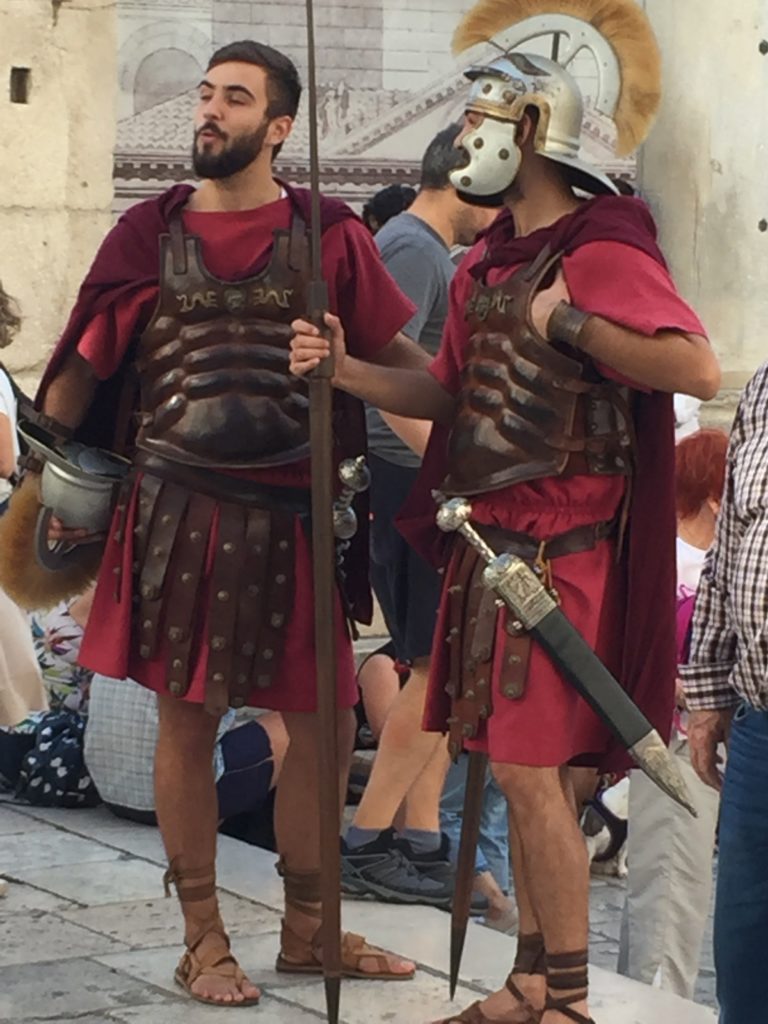
The Croatian city of Split is best-known for one big series of buildings: Diocletian’s Palace.
Diocletian was the emperor of Rome from 284 to 305 AD when he stepped down and moved in to a “palace” that compares favorably with any vanity project dreamed up in the Western world.
Diocletian’s Palace was built as his retirement home, and he might even have done enough for the empire to warrant the expense of a seven-acre (305,000 square feet) seaside site in what is now northern Croatia.
Diocletian was born to a family of low social status, but he had an outstanding career as a soldier that led to him becoming emperor in 284.
Unlike just about all the other emperors who mis-ruled Rome in the third century, Diocletian won victories in the field. He also had several good ideas about balancing the books of the empire, and how to defend it from inevitable invasions from outsiders.
He often is considered the key individual in reinvigorating a teetering empire and setting it on track to survive another 150 years.
He is little-known to much of the world, 1,700 years after he died, in 311 AD, but his reforms as well as the physical existence of his palace, much of which still stands, make him the leading citizen of Split, Croatia’s second-biggest city. Which we visited on a warm and sunny day.
Diocletian, then, is a big deal in the city of Split, and investigating the ruins of his 305,000-square foot palace is a significant lure to tourists in the area — like, say, the people on the Celebrity Constellation, which sailed from nearby Venice.
After spending most of an hour this morning trying (and somehow failing) to find this enormous site, we ran into relatives on one of Split’s major streets, and they aimed us at where we needed to go.
Voila.
Hello, Diocletian.
Some nice digs you’ve got here.
I had read up on the basics of Diocletian and his palace, but it was not enough for me to recognize what I was looking at, from ground level. (Other than the young guys dressed up as ancient Roman soldiers.) So we splurged on a gypsy tour guide at 14 euros apiece, and there we were, with Djorgiana the art student and Split resident who is very proud of her city and the former emperor.
The whole of it is remarkable. Think of it: 305,000 square feet is the equivalent of 12,200 homes of 2,500 square feet.
It also is a bit odd.
French king Louis XIV splurged on Versailles and Peter the Great of Russia built Saint Petersburg from scratch. But those two seemed to be surrounded by people they would enjoy speaking to and interacting with.
Perhaps because he was a soldier, Diocletian seemed to prefer avoiding people during his retirement. He lived in “only” 10 percent of that space, about 30,000 square feet, which included seven bedrooms — one for every night of the week. Certainly some of his co-workers from when he ran the empire must have been there, but he apparently preferred to work in his garden, and was particularly fond of his cabbages.
(He was the only Roman emperor to step down via abdication.)
Two temples and a mausoleum took up another 20 percent of the walled palace, and space for the 10,000 soldiers who guarded him accounted for the rest of the space. (Being an ex-emperor could make a guy paranoid, no?)
Diocletian died in December of 311, at the ripe age (for the time) of 66, after most of seven years in his palace.
For the next few hundred years, the palace was used as a refuge for Roman officials as the barbarian hordes ravaged the western empire, and then it was all but forgotten, even as it was continuously inhabited to a certain degree.
Locals took part in the ancient practice of “mining” precious marble by taking it from existing structures that had fallen out of use.
Luckily for historians, the palace was inhabited long enough that fecal matter built up beneath the arches and walls of the palace, and eventually hardened to become a solution that preserved the stone and bricks beneath.
Some of the palace remained observable, and churches, markets and houses were built on bits of it.
In the 19th century some British archeologists arrived at the site and wrote about it, touching off enough interest that University of Minnesota researchers arrived on the scene in the 1960s to help the former Yugoslav government dig out much of the palace.
And now Diocletian is a big deal, again and, if our observation of tourists is any guide, his palace is easily the greatest attraction in the city of Split and its surroundings.
Travel: When you learn interesting things just by showing up.

0 responses so far ↓
There are no comments yet...Kick things off by filling out the form below.
Leave a Comment